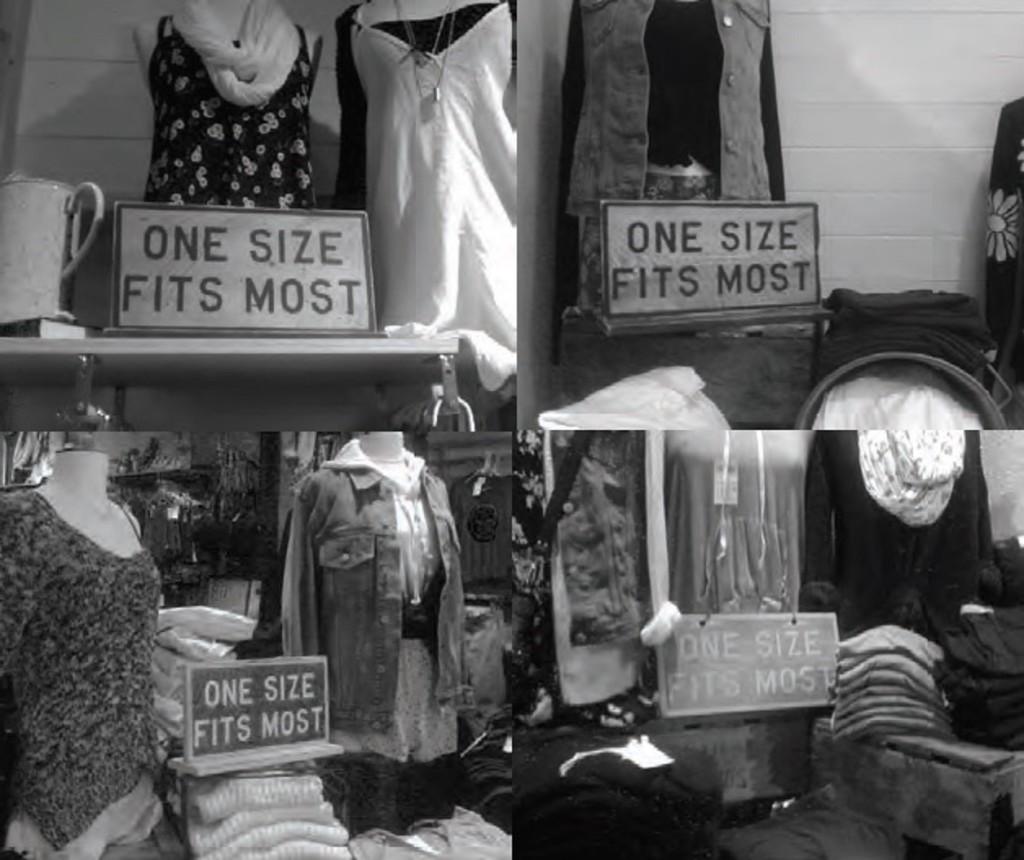Brandy Melville size policy pressures teens
There is something unnerving about the Brandy Melville outlet at Valley Fair, and it isn’t the aggressively dark lighting, nor is it the bundles of dried grass, though those certainly are strange. It’s the carved wooden signs, one on each clothing stand, which read “One Size Fits Most.”
The signs are hung on walls, propped up by mannequins, and even posted on dressing room doors, as though the company feels the need to remind shoppers that only an exclusive set of people can pull off Brandy Melville’s line of clothing. Brandy Melville, an Italian company that has quickly become the rage in the U.S., caters mostly to teenage girls. The stores differ from branch to branch, but they all have one thing in common: the clothes they sell are tiny.
According to the U.S. Center for Disease Control (CDC), the average 16-year-old girl in the U.S. weighs 137 pounds and has a 31-inch waist. By contrast, Brandy Melville’s largest skirts are 25 inches around the waist, meaning that they fit, at most, a size five shopper.
The majority of the teenage girls who walk past Brandy Melville would not fit into any of the clothes inside. The chain’s sizing chart begins with a disclaimer: “Most of Brandy Melville clothing is one size, a loose, over-sized fit that should fit a range of sizes comfortably.” One has only to walk into a Brandy Melville store to see that this is not the case. Many of the clothes they carry vividly patterned mini shorts, for instance- are skintight and formfitting, which means that they fit the trend.
They just don’t fit the shoppers.
Another gem from the store’s website: “Women of every age can find something at Brandy Melville to fit their size, closet, and budget. This is a particularly blatant
lie, since the store sells basic tops for over $30.
Brandy Melville can persuade people to pay high prices for its clothes because it manipulates teenage shoppers. Brandy Melville isn’t sticking to European sizes, nor do they hold up reasonable sizing conventions that Americans just don’t fit, as some loyal customers have claimed. The company is simply exploiting for profit the insecurity that teenage girls often feel about their bodies.
Brandy Melville’s limited sizing should leave the chain with very few customers. It has become trendy mainly because it promotes its one-size-fits-all policy so heavily: shoppers who can fit into the clothes are encouraged to feel part of a tiny (literally) club. This leaves the great portion of the store’s target demographic who cannot wear Brandy Melville’s clothes burdened with even more pressure to lose weight.
This is the last thing a teenage girl needs. In a culture already saturated with skinny mannequins and photoshopped models, Brandy Melville takes a harmful idea to
the extreme.
Brandy Melville is not unique in its attitude toward teenage girls: plenty of other popular clothing stores hide larger sizes behind counters and stock fashionable, form-fitting items only up to a certain measurement. However, it is one of the most extreme examples to hit American malls, and its popularity means it has a very strong influence over teenagers’ self-esteem.
Until Brandy Melville stops humiliating customers who weigh more than a hundred pounds, it does not deserve a customer base.


